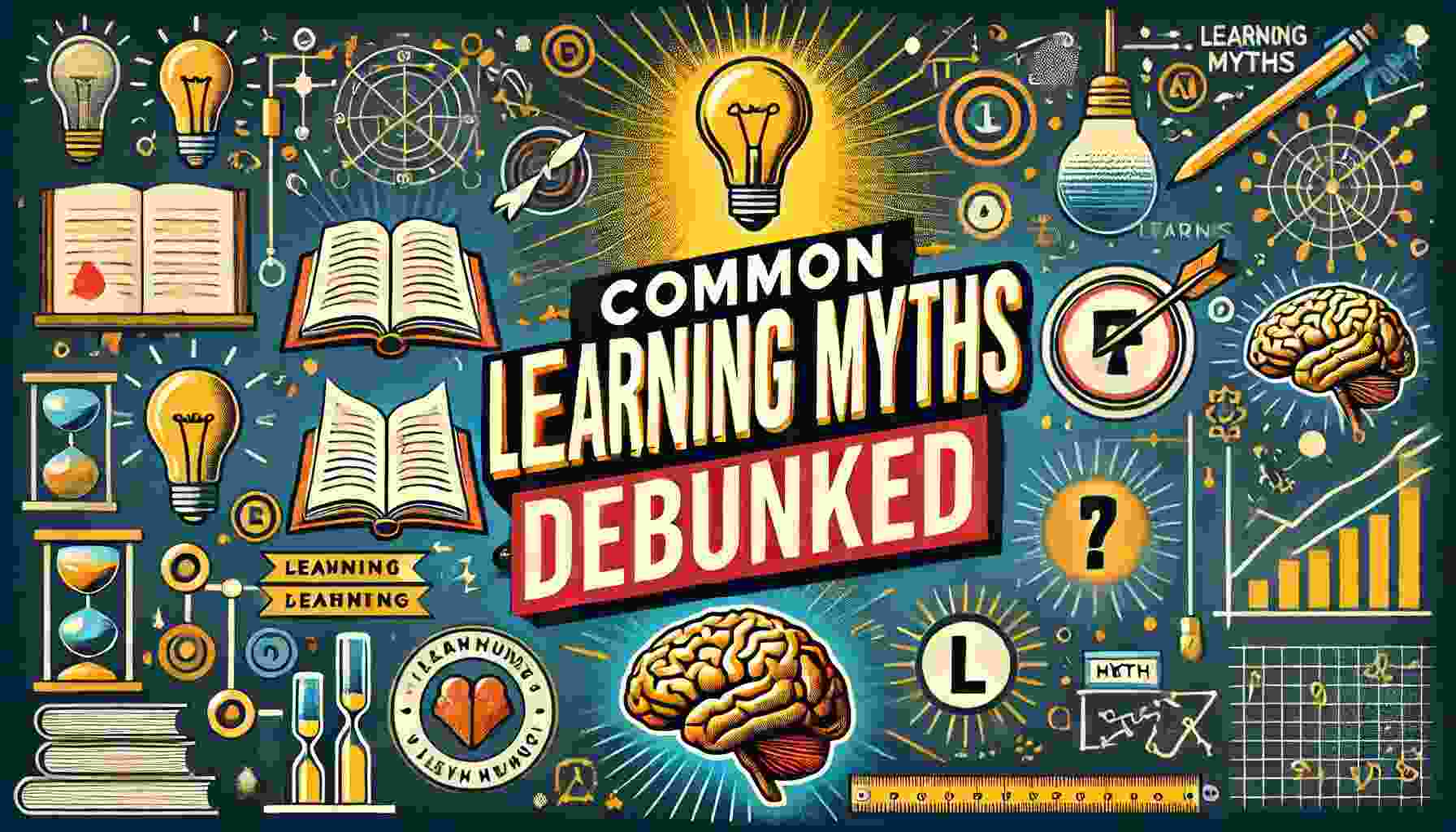There are a lot of myths about leaning that have stuck around long after the evidence disputes them. Here are seven myth-busting learning myths:
1. Learning Styles Determine Success
📖Myth: People learn best the way they do when learning themselves, that is, through their preferred learning style (visual, audio, kinesthetic, etc.)
🌍Reality: There is information suggesting that teaching to learning styles is not effective in improving learning outcomes. In fact, employing a variety of teaching styles helps all learners.
2. You Use Only 10% Of The Brain
📖Myth: The rest, which is over 90% of the brain is inactive and tapping the other 90% can increase intelligence.
🌍Reality: Brain scans show that we activate all of our brain, including during rest, and that different tasks activates different parts.
3. Multitasking Lead you on Learning More productively
📖Myth: Learning goes faster when you do multiple things at once.
🌍Reality: The brain cannot fully concentrate on many tasks at a time. Multitasking lowers retention.
4. Cramming Beats Out Spaced Learning
📖Myth: Working on everything at once before the exam will ensure that information sticks.
🌍Reality: Spaced repetition—spaced out review— increases long-term retention much more than cramming.
5. Being Good At A Subject Means They Were Born With It
📖Myth: Talent is born, you have it or you dont.
🌍Reality: Some people are born with natural talents, but practice, hard work and good learning techniques are the real way to excel.
6. Avoid Mistakes When Learning
📖Myth: Making mistakes means a failure and should be avoided.
🌍Reality: Mistakes are essential for learning. They help to practice concepts and provide opportunities to debunk misconceptions.
7. Rereading is the Best way to Study
📖Myth: Simply re-reading your notes or even textbooks has been shown to aid in retaining the information.
🌍Reality: Cuestión de que retamos obtenemos mucha más que el reread passive.
Knowing these myths, and using evidence-based methods instead can make all the difference in getting learning outcomes right!
